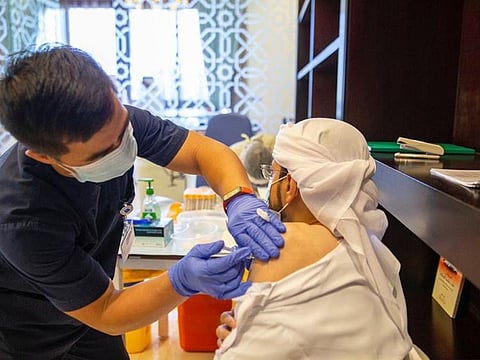Post COVID-19, public-private alliances are way to do it for UAE healthcare
Working in tandem helped gain a grip on COVID-19, and this can be put to other uses too

In the new year, COVID-19 remains a reality we continue to address, fight, and aim to keep under control. Healthcare sectors in many countries are at the brink of collapse, unable to bear the ongoing pressure for which they seem ill-equipped or have run out of steam.
The situation demands constant revision in policies as new developments emerge in both controlling and eliminating the virus.
Fortunately, the UAE in this regard has been a prominent example – not just in the region but across the world – for its practical, effective, and timely measures. When we glance at the year that was, we see several decisions that speak of the government’s foresight and quick thinking.
Among these, one very important decision that helped sustain the healthcare sector was the active partnership between private and government healthcare institutions.
One of the biggest challenges in the initial pandemic days was testing, identifying, isolating and treating COVID patients as per their condition. Not all COVID patients required intensive care contrary to public fear and perception at that time, and the UAE government was quick to spot that and act accordingly.
Moreover, there was an urgent call for massive testing and quarantining. This is where private hospitals and companies stepped in to work in close collaboration with the government, bringing to the board their expertise and manpower.
Drastic intervention
The arrangement worked both ways, since at that point private healthcare sector was facing its own set of challenges with a marked reduction in patient traffic to hospitals. Elective procedures had stopped and outpatient business - which contributes to about 70 per cent of the revenue - drastically dropped to around 25 per cent.
There was a dire need to find a solution that could help prop the potentially collapsing private healthcare sector back on its feet while at the same time help contain the spread of COVID-19. This is when the UAE government rose to the occasion to help them out of this situation.
As a result, the government joined forces with the private sector, setting up field hospitals for thousands of COVID patients across the UAE, while private organisations helped in managing those by providing human resource.
Go mass and wide
The government further granted private hospitals approval to screen masses and to identify hotspots. This was a great move, since massive screening could not have been possible in isolation by either of the sectors.
Moreover, when the government identified and isolated the quarantined cases, a number of private hospitals and other organisations came forward to collaborate for the management of the quarantine centres.
Today, between the public and private, the UAE healthcare sector is testing around 150,000 tests per day. Furthermore, in a population of 9 million, more than 19 millions screenings have already happened because people are getting themselves tested multiple times. At RAK Hospital, for example, the staff gets tested for COVID twice a month.
Treat at home
In addition, to give UAE residents and medical tourists the confidence to visit hospitals again, private hospitals were made COVID-free, which was a huge morale booster. Most patients were provided with treatment either at home or at quarantine centres, while a small number which needed intensive care were kept in hospitals specified for COVID treatment.
Thanks to these steps, not only have patients returned for regular hospital visits and procedures, UAE is also in a confident position to welcome back medical tourists.
All these measures have been possible only because of public-private partnership. There’s no denying that the UAE is an example of PPP for other countries, particularly in times of crisis.

- Dr. Raza Siddiqui is Executive Director at RAK Hospital.
Sign up for the Daily Briefing
Get the latest news and updates straight to your inbox







